Impatient for work that's way late, we're fed up and going off for a long weekend
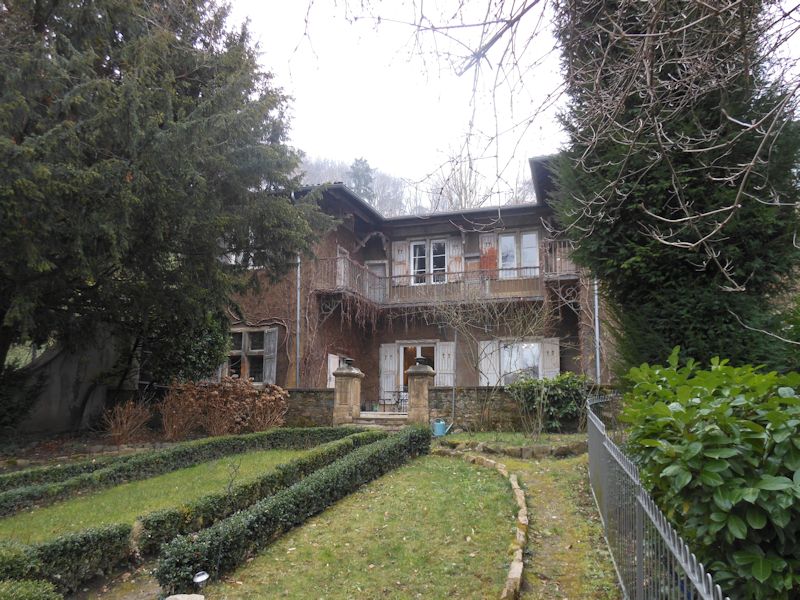
We've visited Lyon a few times before but forgotten nearly everything, so this is the refresher course. It's early March 2013, and the documents we were waiting for to work on haven't shown up, so we're off.
This is the Maison d'Hôtes du Greillon, an 18th century town house up on the hillside overlooking
the Saône river.
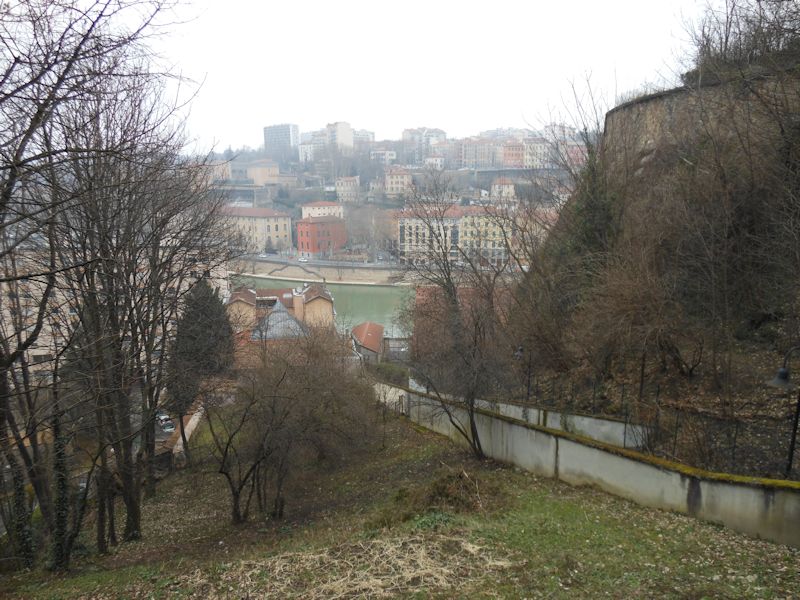
The view of the Saône from the gardens on a grey day, with the northern district of Croix-Rousse
across the way.
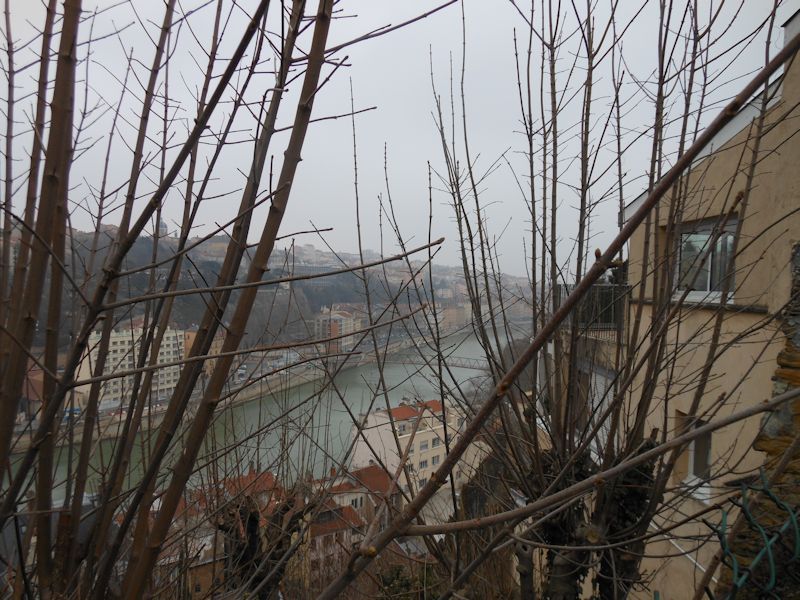
Another view of the Saône as we're marching down to Vieux Lyon, the old town, for some sightseeing and dinner. The Greillon house was perfectly satisfactory, in principle, but not in practice, as we didn't bring the car and didn't fancy walking half an hour back up the mountain after dinner every night, so we've decided to move on tomorrow (with a not entirely unreasonable penalty for canceling).
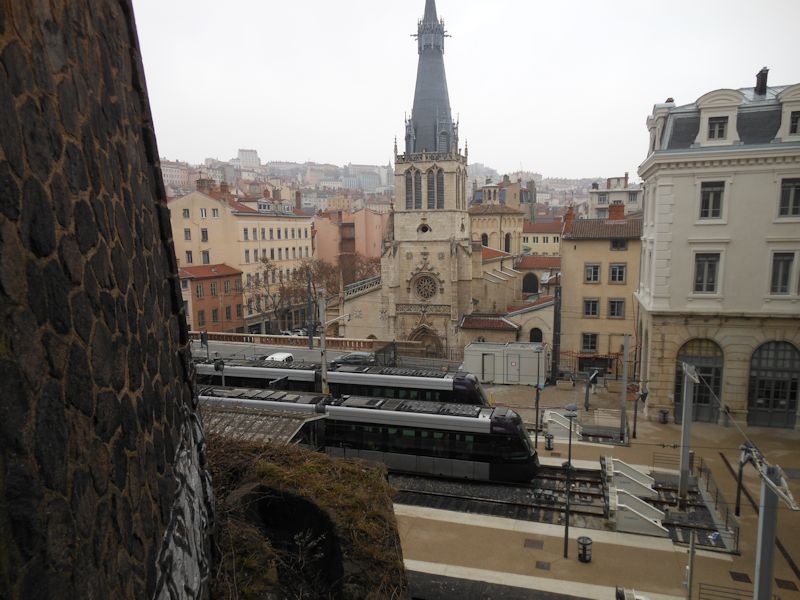
We're cascading down the hill past the Gare St-Paul, and the Eglise St-Paul behind it.

Crossing the mighty Saône onto the Presqu'île, the 'Almost an Island' centre of Lyon between the rivers Saône on this side and the Rhône on the other.

The Place des Terreaux, formerly part of the city wall turned into a large piazza in the early 17th century, now the focus of the northern end of the centre city before it heads up into the Croix-Rousse hills. That's the mid-17th century Hôtel de Ville or city hall, and the Musée des Beaux Arts is right here on our right, in the Palace of St-Pierre.
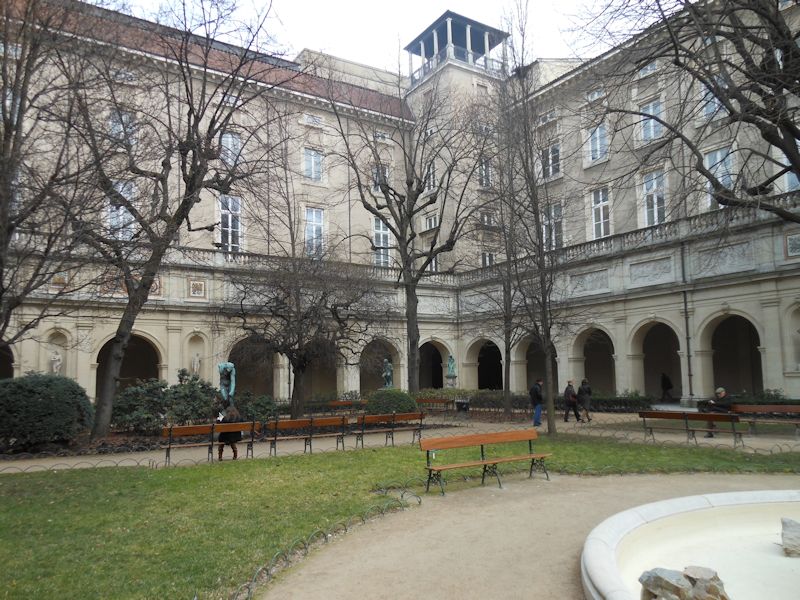
The
Fine Arts Museum is housed in the 17th century royal Benedictine convent
called the Palais St-Pierre and is part of the UNESCO World Heritage Site -- in fact, the entire old city of Lyon is the World Heritage Site.
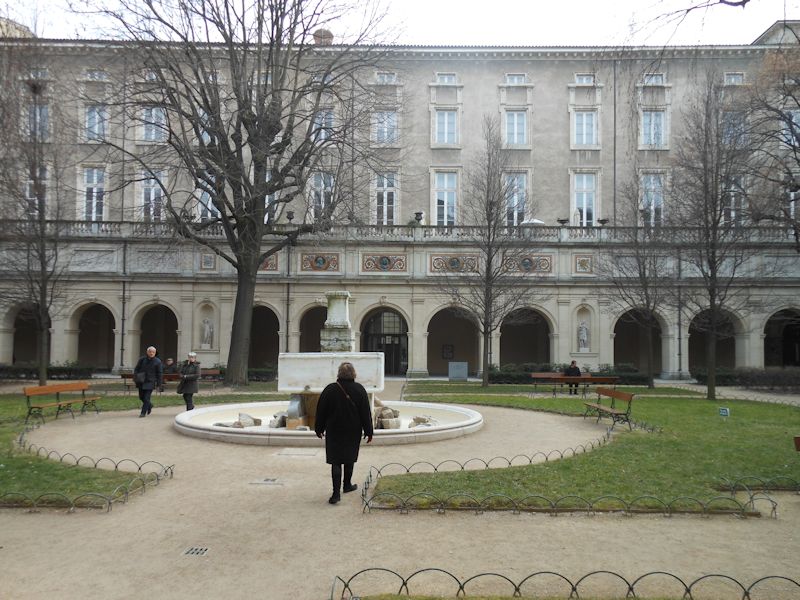
The museum's got masses of 20th century French painters, of course, but older ones like Simon Vouet and Poussin, too, and Ingres, Géricault, Delacroix, Degas, Renoir, Manet, Cézanne, etc., etc. More importantly, there are excellent representative works of 16th century Flemish painters, as well as at least something by all the great Italians and Spaniards from the 15th century onwards.

All the big names are here, and a fascinating lot of less well known ones as well, but since there's not a huge volume of it on display, they can be set out in a relaxed and spacious setting.
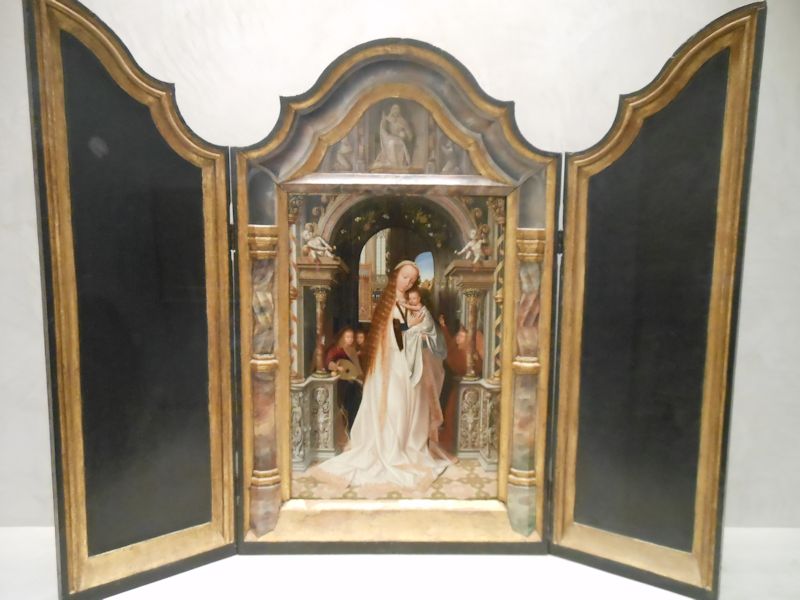
But here's an elegant long-haired madonna from about 1509 by Quentin Metsys.

And speaking of elegant! The Ricotta Eaters, by Vincenzo Campi from late 16th century Cremona. This is a "No Flash" establishment (not an old-fashioned "No Photo" regime), so you can record all the memories you want to as long as you don't mind a little shaky blur.
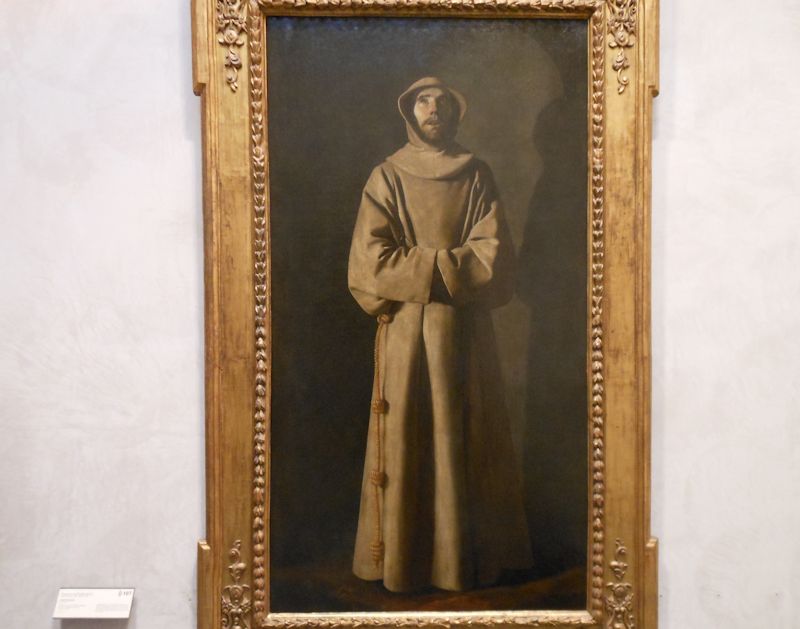
Everyone's favorite ecstatic nutter, St Francis by Zubarán ('It takes one to know one')
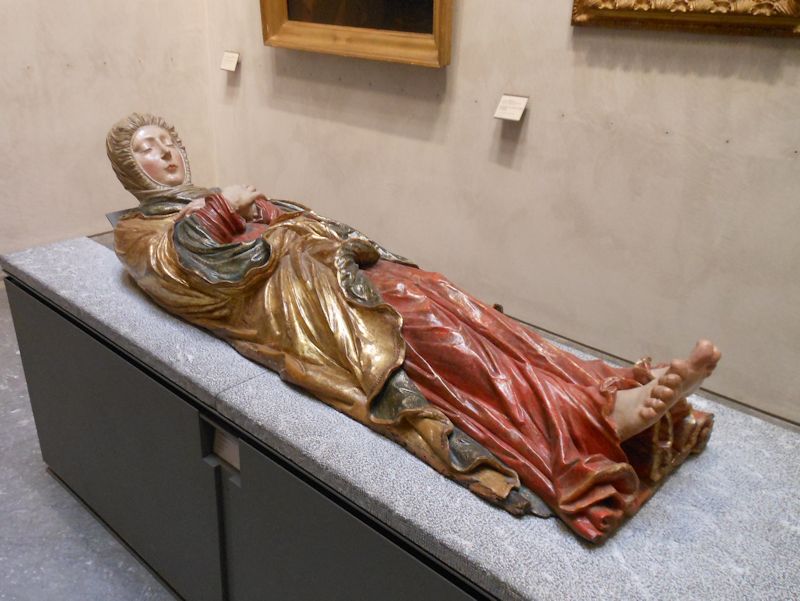
The Madonna of the Callused Toes

For our Mary Magdalene collection, this (on the far left) is Simon Vouet's version -- there are a million Mary Magdalenes, and this one couldn't be farther from Donatello's in Florence.

For our collection of "What Were They Eating at the Last Supper" -- sometimes just bread, but most often what resembles rats. This main dish is pretty hard to identify.
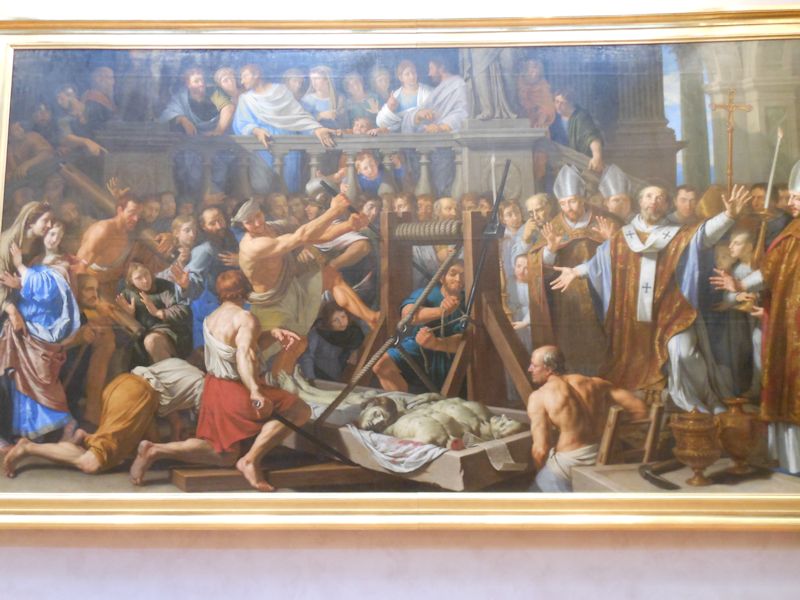
An addition to our beheadings collection, this lurid scene by Philippe de Champaigne (ca. 1660) commemorates the brothers St Gervais and St Protais (sons of Saints Vital and Valérie), 'martyred' by Nero but dug up by St Ambrose in 386 and translated to Milan.

The Christian tradition gives nothing away to American cable television and its gory preoccupations.
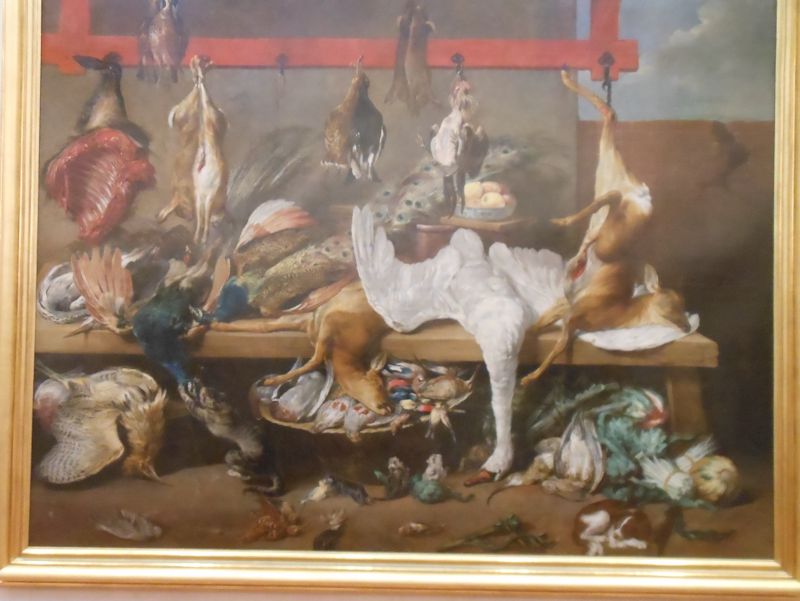
Frans Snyder's Kitchen table with game and vegetables, which might as well be known as . . .

Kittens rule!
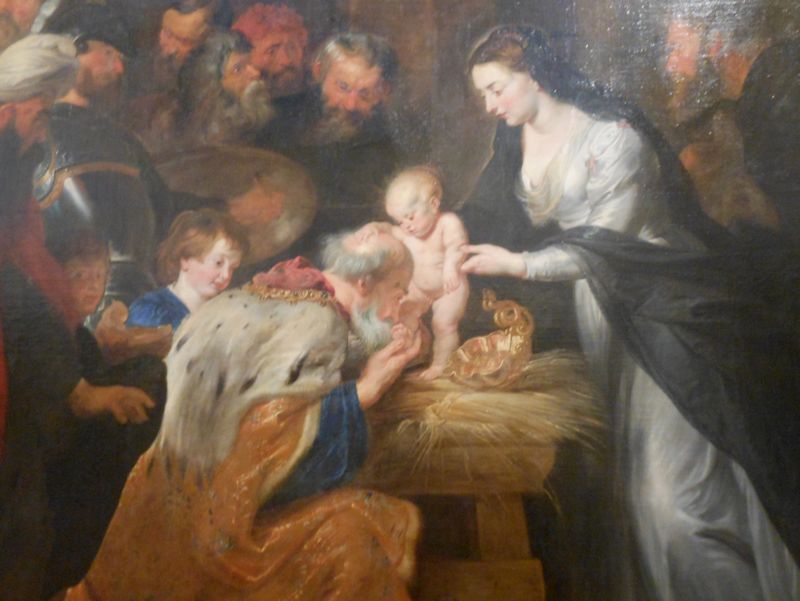
Another nasty circumcision scene -- at least this time Jesus seems okay with it. Not like the poor kid dodging the Circumciser General in the Sacro Monte di Varallo.
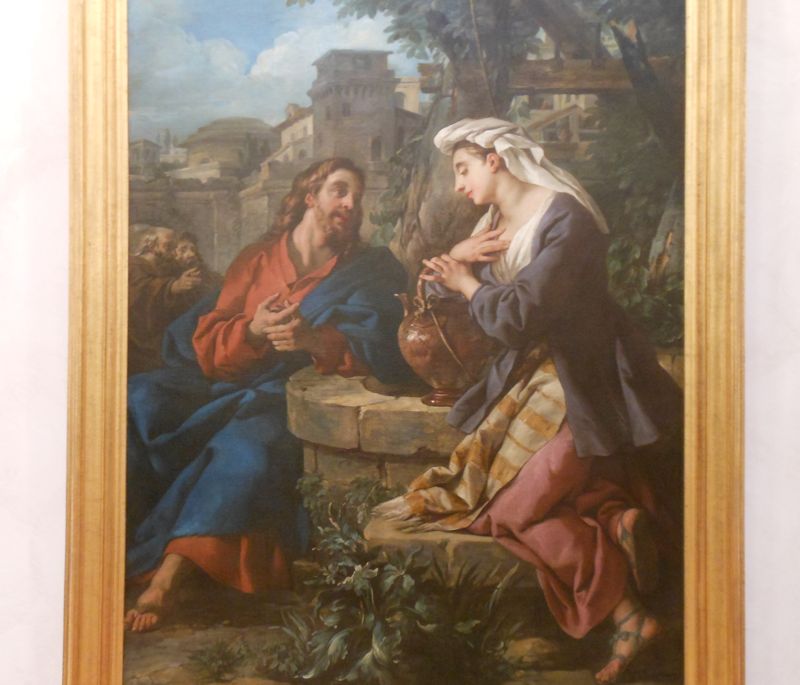
Jesus as a love-struck college freshman (J-F le Troy, Jesus and the Samaritan woman, 1742)
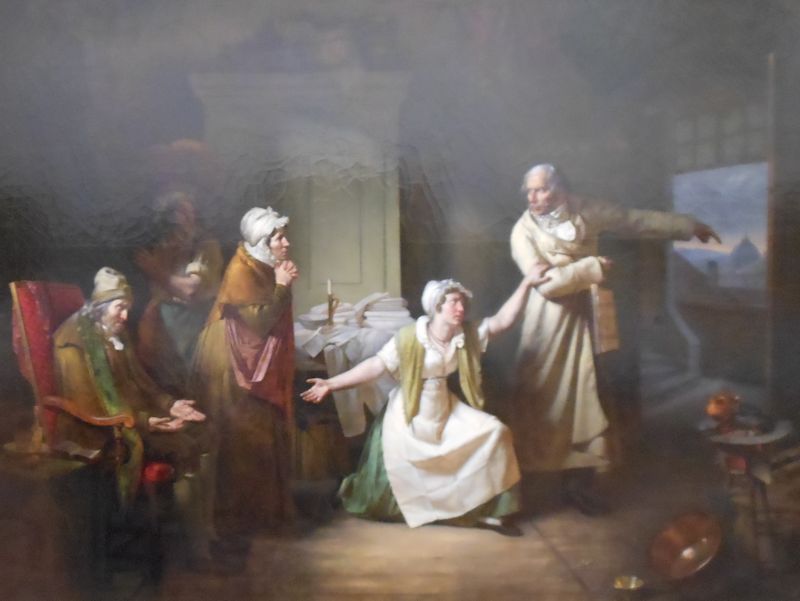
The Bank of America says you've missed a mortgage payment! (Bonnefond's Le mauvais propriétaire, 1824)
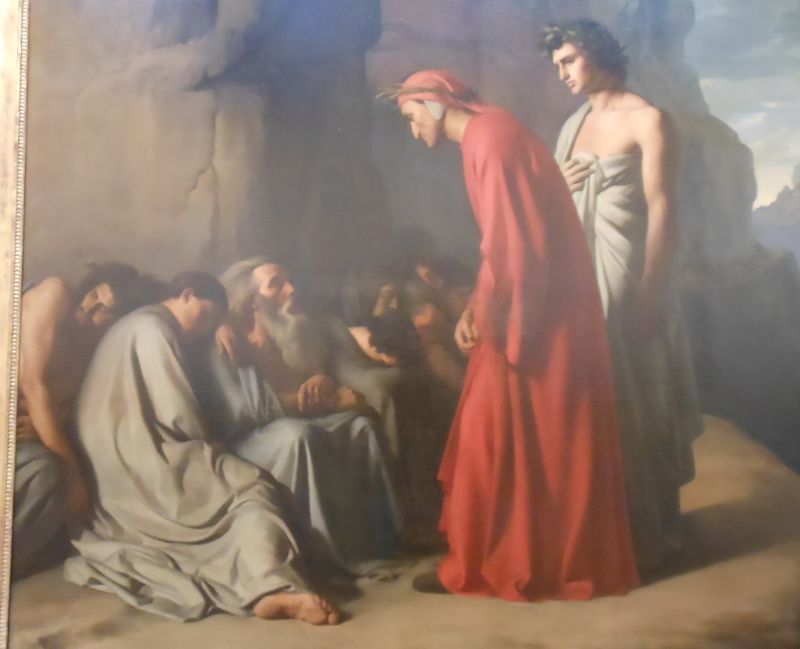
For our Dante collection -- Hippolyte Flandrin's 'Dante and Virgil and the souls of the envious'. This time with no birds on his head.
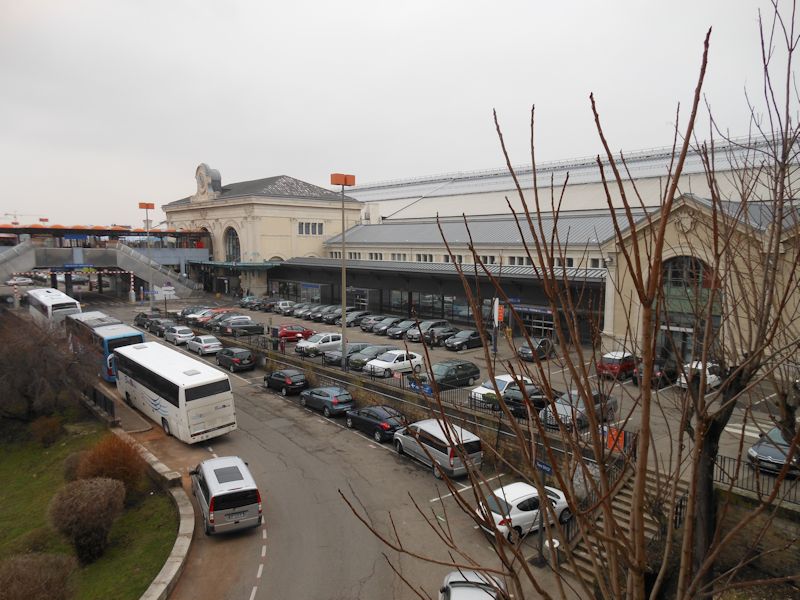
The main Lyon rail station, Perrache, and this morning we're nicely installed in the Mercure Château Perrache next door, the venerable railway hotel (formerly the Hotel Terminus until Klaus Barbie set up his Gestapo headquarters in the place and gave it a bad name)
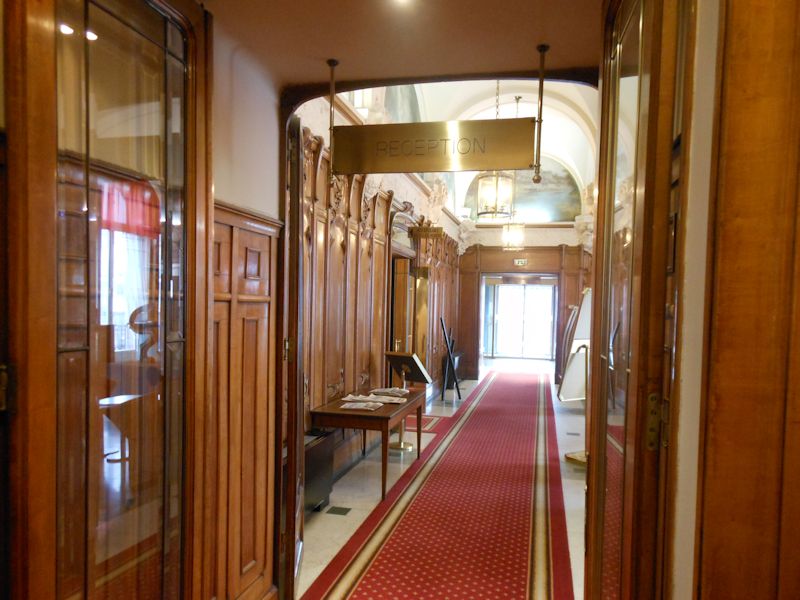
Elegant interiors, and we're on some sort of promotional deal which looks like about one-third of the normal cost.
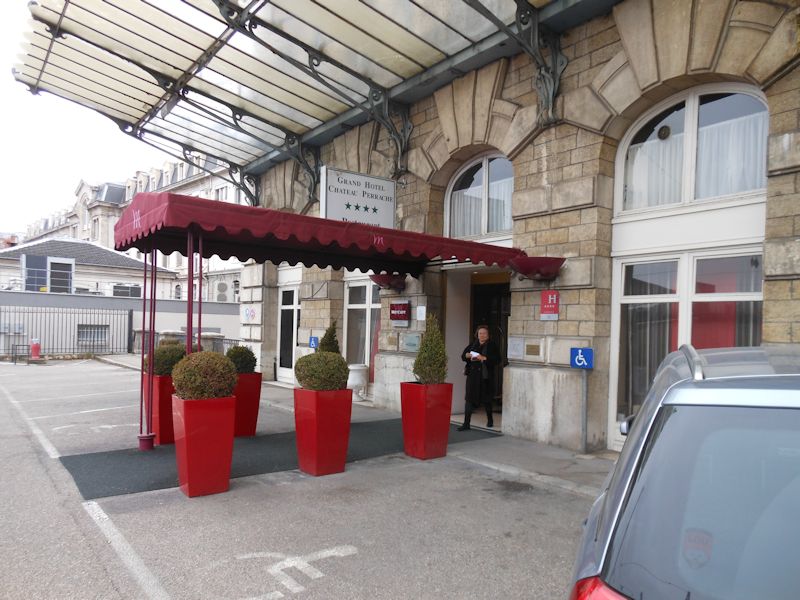
All signed in and out for another walk round town
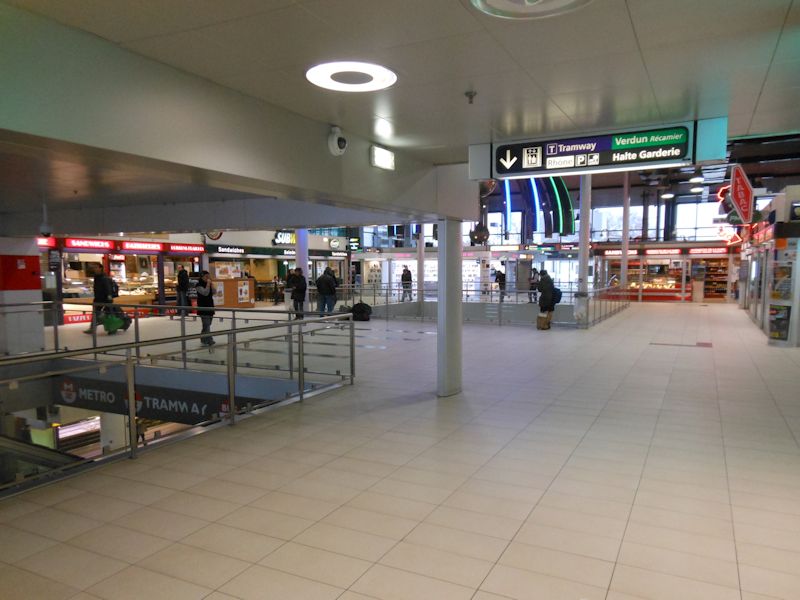
The brilliant walk-through from the main railway gare into the Presqu'île semi-old town, a long concourse getting you through all the parking garages, subways, and buses, with brightly-lit shops and a general air of hilarity.
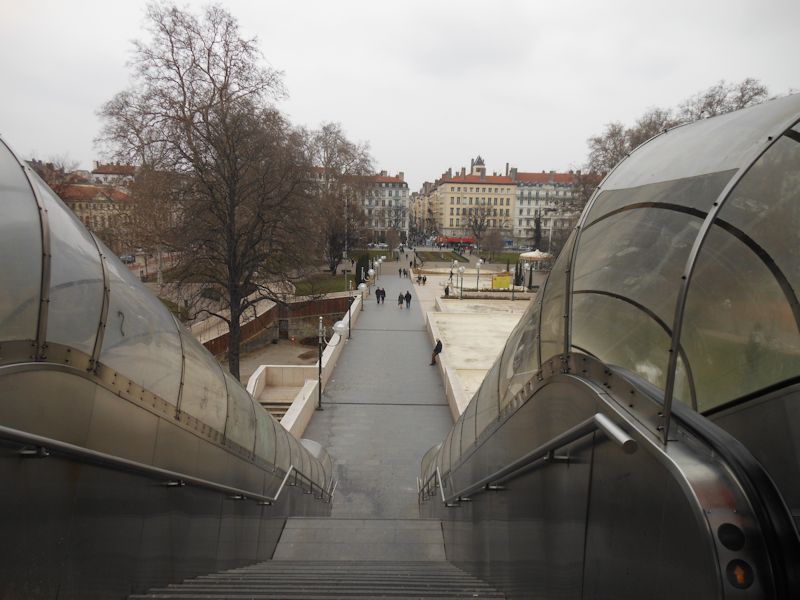
Out the northern end of the Perrache railway station, goggling out onto the Victor Hugo shopping street through the Presqu'île semi-old town
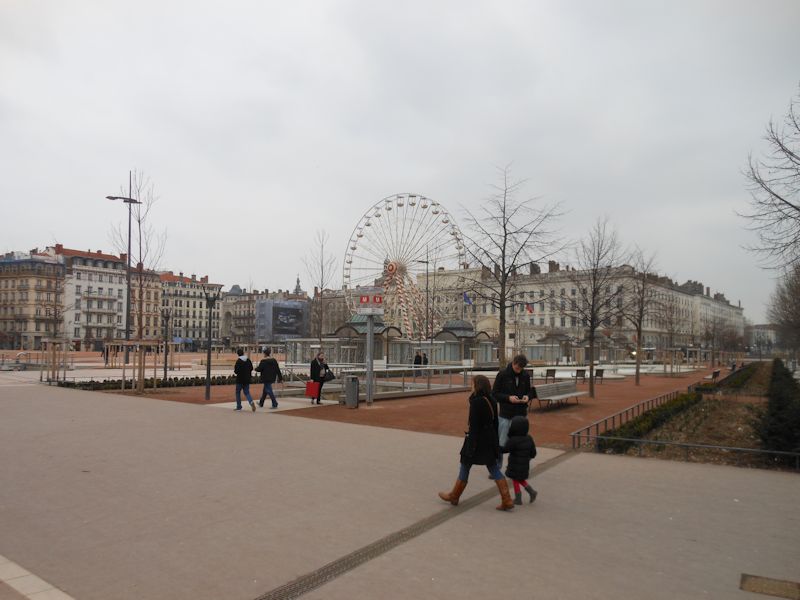
The Place Bellecour, the "largest pedestrian square" in Europe, originally an island in Gallo-Roman times, long a pasture and swamp owned by the Archbishop, site of guillotines during the Revolution, soon after renamed the Place Napoléon Bonaparte, and a parade and training ground for the cavalry by the look of it.
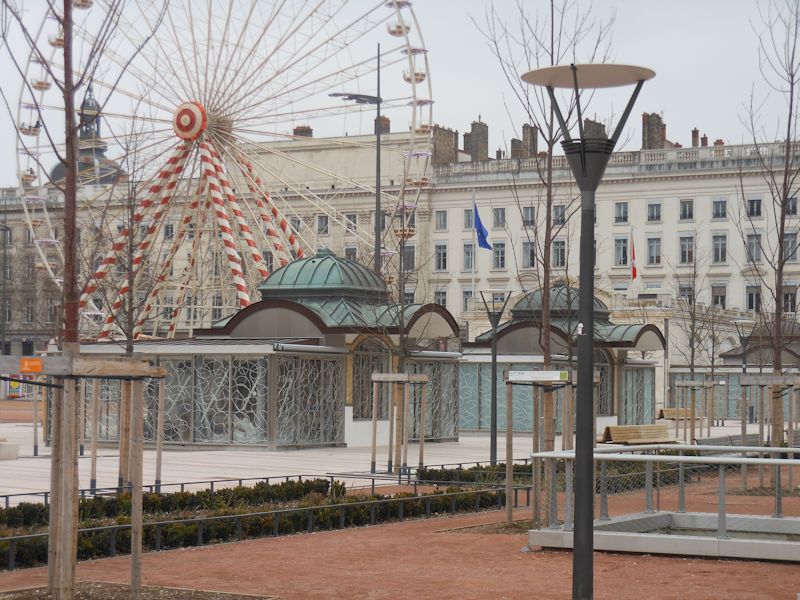
Lyon was apparently founded in 43 B.C. as a Roman colony on the site of an old Celtic hill fort, up on the Fourvière hill, and soon became a grand carrefour of Roman roads and the capital of the Three Gauls. It's the only site in the Roman Empire associated with a serious massacre of Christians (in A.D. 177), and it repeated that with the Huguenots in the Bartholomew's Day Massacres of 1572. The city held out for two months against the Jacobin revolutionaries in 1793, and during World War II it was an energetic centre both for the German occupation authorities and for an alphabet of Resistance organizations, best known perhaps (as historically a centre of the printers' trade) for its Resistance pamphlet literature.
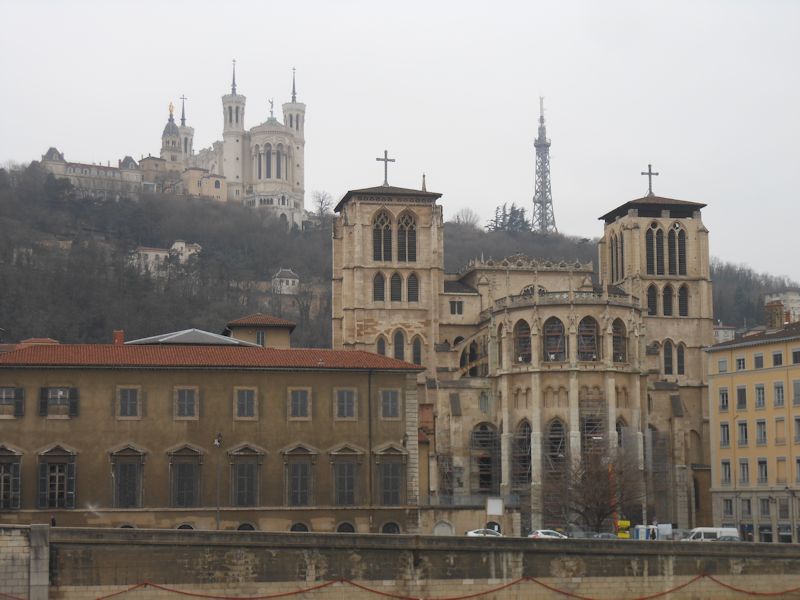
The Fourvière hill, above the Saône, was the site of the earliest Roman antiquities (which we'll soon visit), but the medieval Old Town moved down to the riverside under that hill. Subsequently the centre of affairs migrated across the Saône onto the Presqu'île and the port facilities around the confluence of the Saône and Rhône rivers.
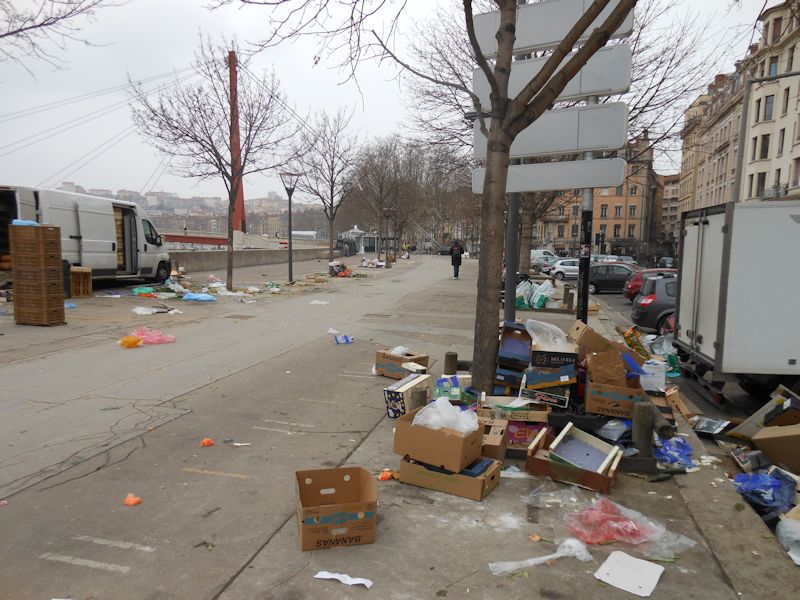
The riverside street markets are closing up for the day. Nice.
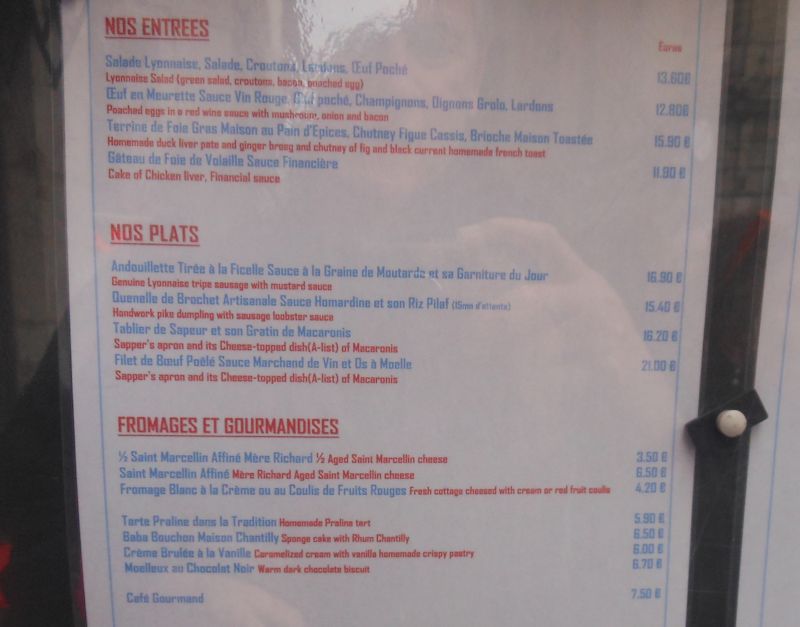
When you see a dinner menu that features Andouillette, run! A specialty of the region, you don't have to try to eat it or even look at it -- if anyone within a city block of you orders it, you'll throw up on the floor. Lyon is known as the gastronomic centre of France, for reasons that are sometimes likely inedible, but if you're careful there is some great stuff here -- like tartiflette, yes!
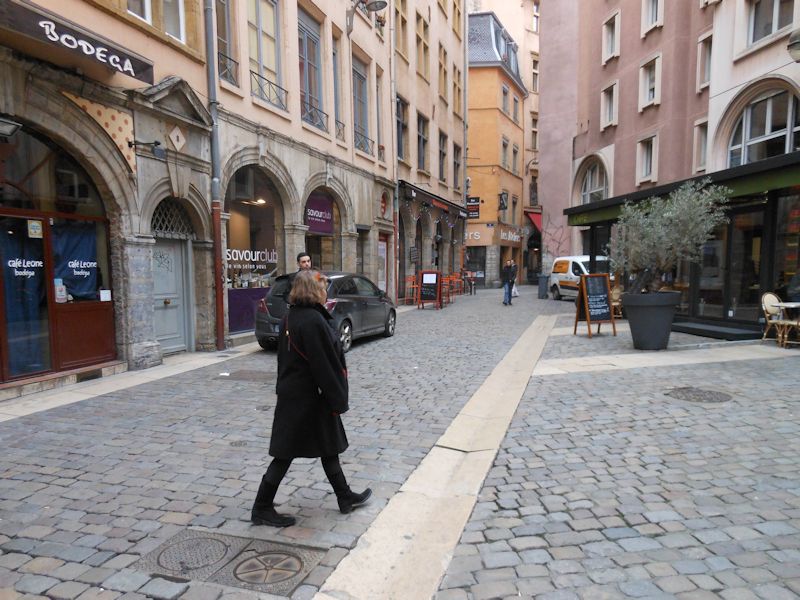
Andouillette quite apart, we're looking all round the restaurant district in vain for a quick lunch, not a major midday investment.
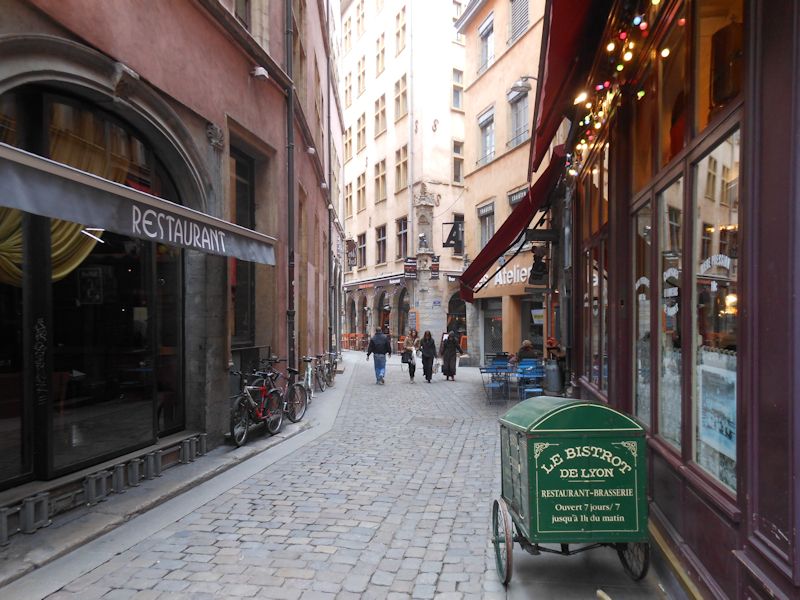
They all look great, but I only want a ham and cheese sandwich . . .
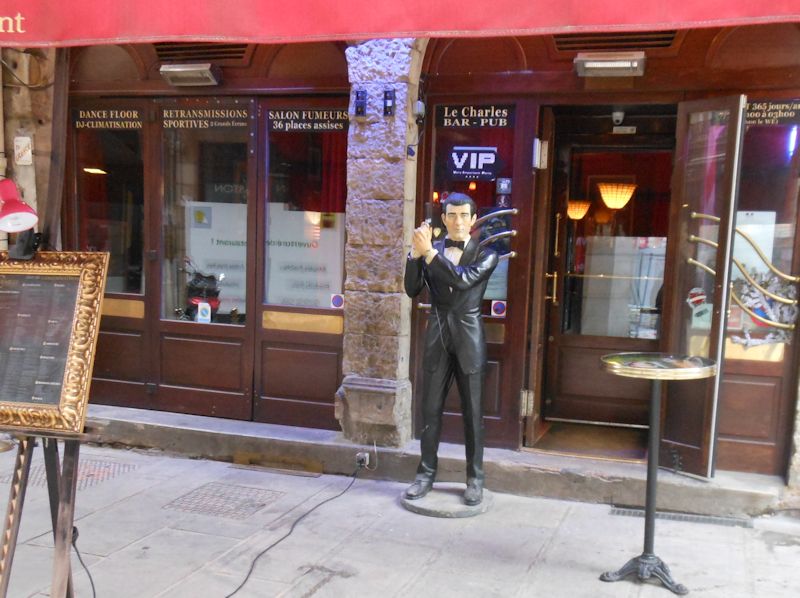
. . . and not to get shot at by the bouncer at Le Charles bar. We finally found a marvelous tartiflette down the street a ways.

We're over the river in Vieux Lyon, the medieval city built at the foot of the original Fourvière hill. The children's boutique Tribu-des-gones, 'Tribe of Kids', reflects the old Arpitan dialect word for children.
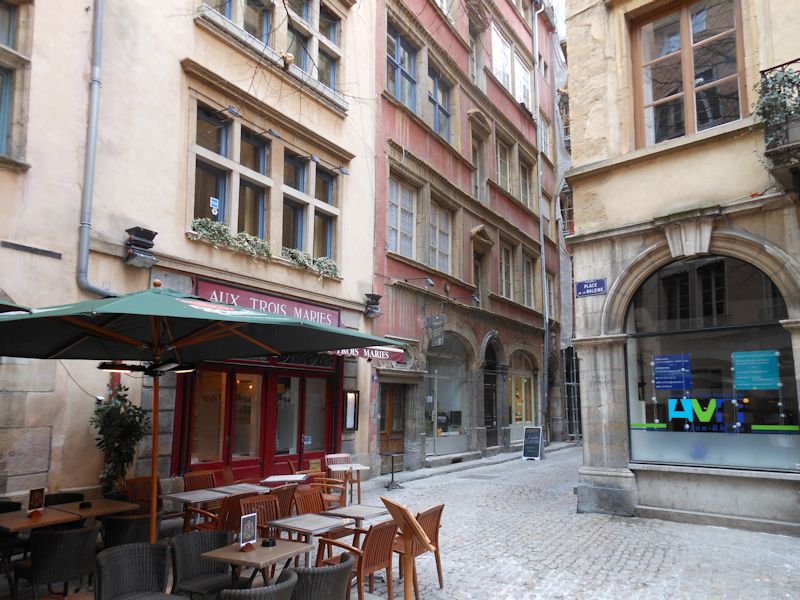
Now we're hunting for the famous Lyonnaise traboules. Old Lyon is full of them, and so are the slopes of the Croix-Rousse silk-weaving district to the north.
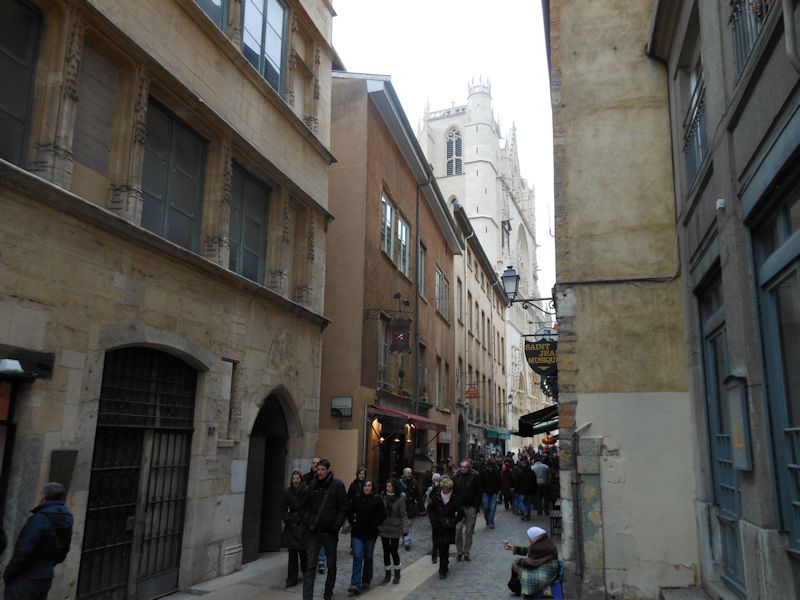
This is the Rue St-Jean, an atmospheric shopping street leading through the old town to the cathedral of St John. There are traboules in a few other French cities, but in Lyon they're everywhere.
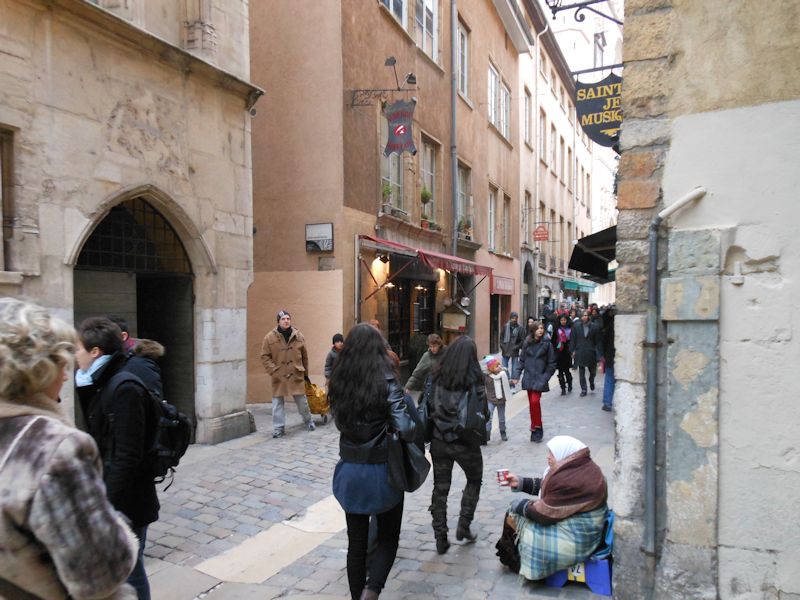
Lyon is a very prosperous town, but not everyone is equally prosperous.
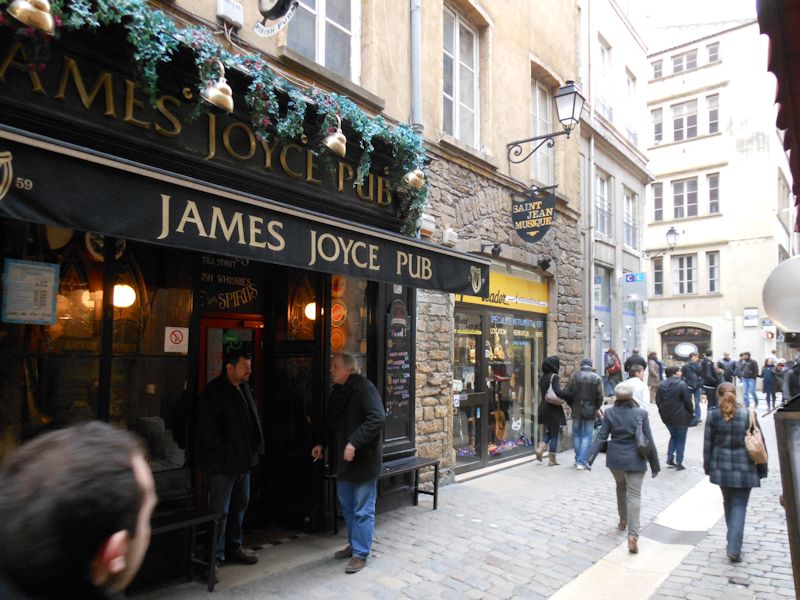
'George Washington never slept here'. Neither did James Joyce.
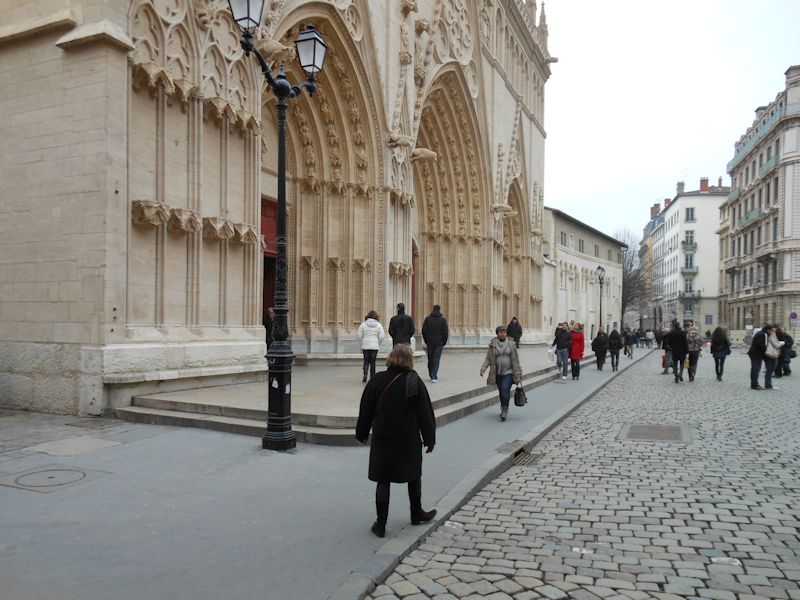
St John's Cathedral -- there was a church here at the bottom of the Fourvière hill from the 6th century, but the present building was started in about 1180 and completed 300 years later (no quarterly balance sheets required by the shareholders back then?).

The large piazza is called . . . the Place Saint-Jean. Here it is, on a distressingly grey day, with a fountain out front showing somebody baptising someone who looks like Jesus.
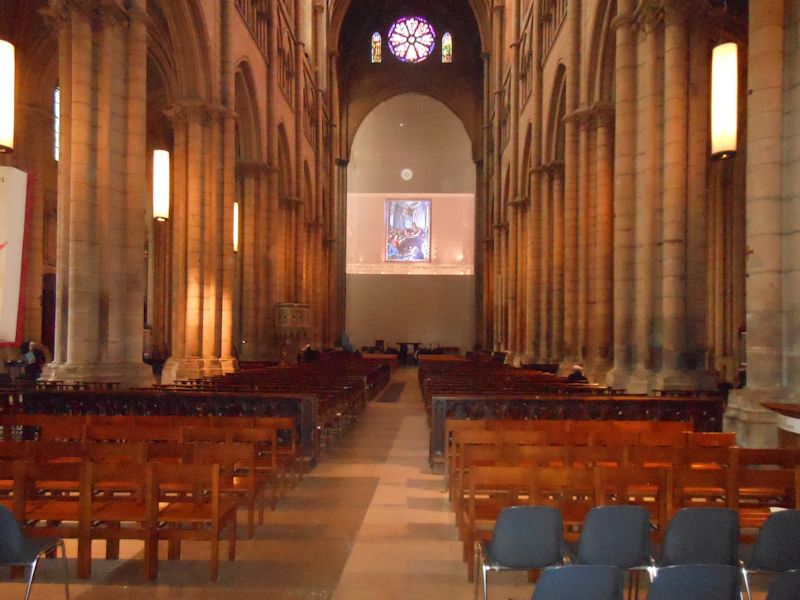
Very nice inside, with interesting projections on a false wall where you'd sort of expect an altar.

A fine gothic nave
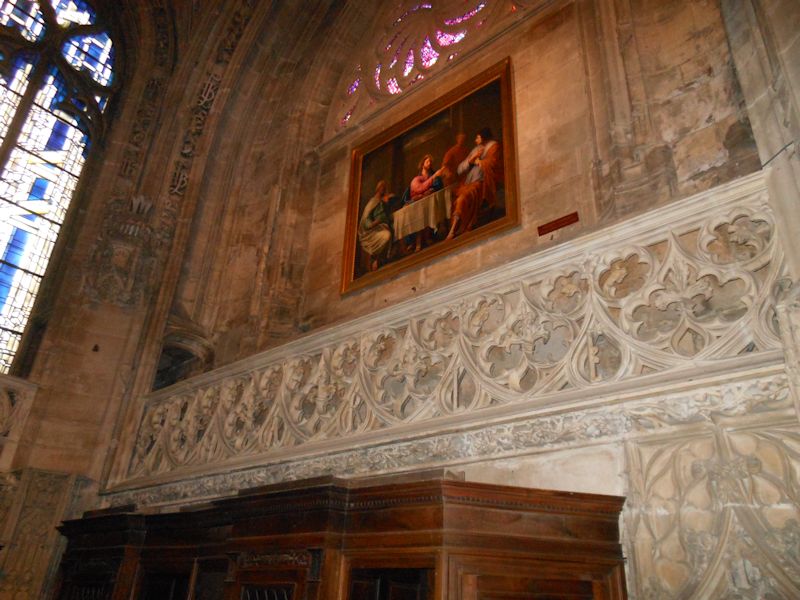
The Galleries. That's Jesus in the middle but it's too far off to make out the others. Probably Thomas, the original "Show Me" fellow.
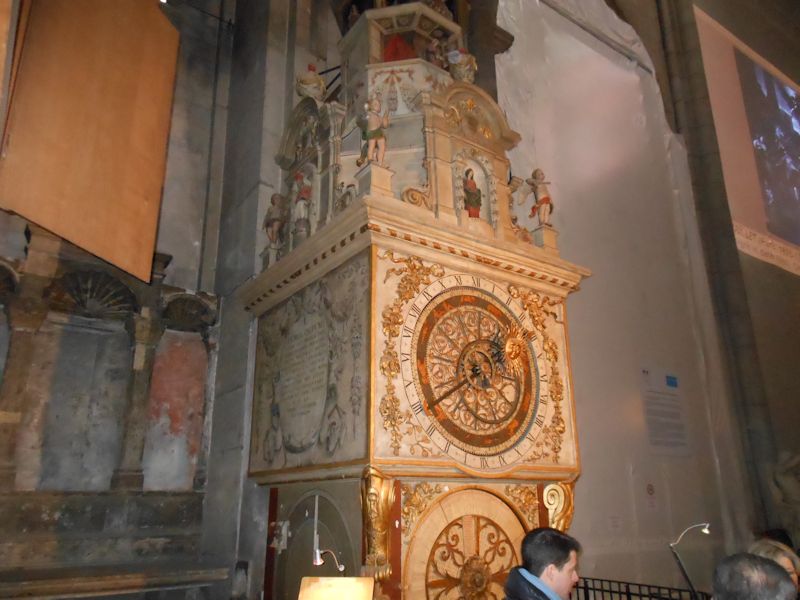
Lyon's astronomical clock, built in the 1340s (as I recall), during the same fad for cathedral machines to show how the heavens work (sort of) and incidentally to tell the exact time as well, as if anyone cared back then -- about the same year as the first Strasbourg clock.

Back on the hunt for the traboules -- they're all over Old Lyon, most of them noticed with a civic plaque but not all of them open to the public.
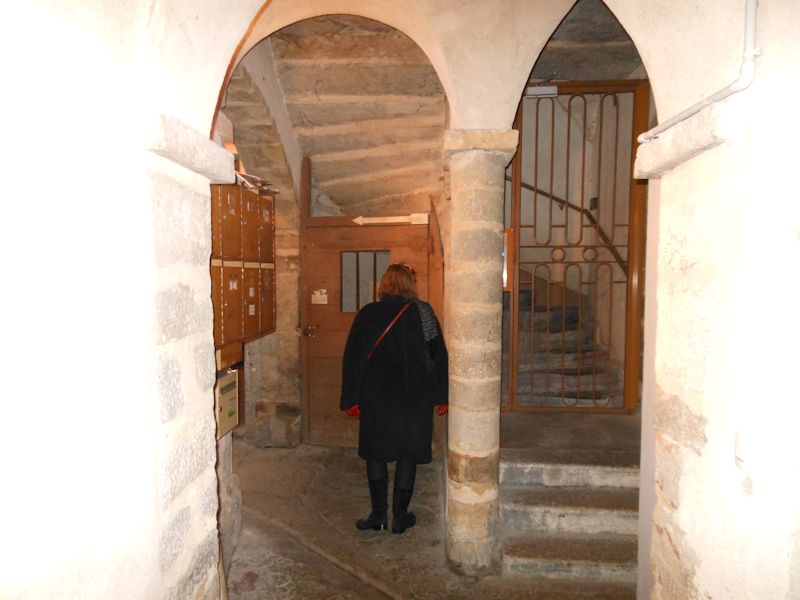
But this one is, the 'Long Traboule' near the cathedral, running towards the river through the blocks of houses between the Rue du Boeuf (presumably the butchers' section of town) and the Rue St-Jean thoroughfare.

The traboules (from "to pass through", trabulare, in late Latin) are above-ground passages through and under the old buildings, connected up to provide the merchants and workers with direct routes through the warren of medieval streets from the hillside shops to the docks on the river.
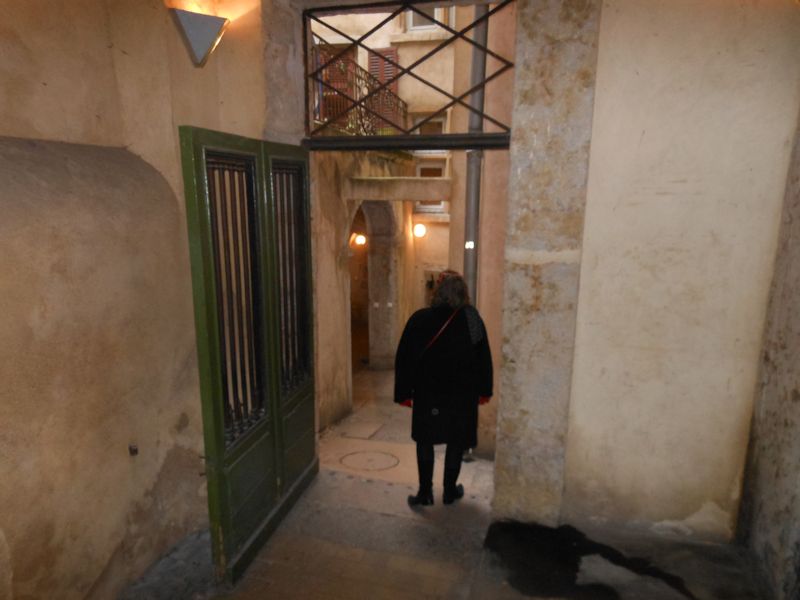
The Long Traboule passes through several buildings and their courtyards; it's locked up at night but left open for us sightseers during the day.
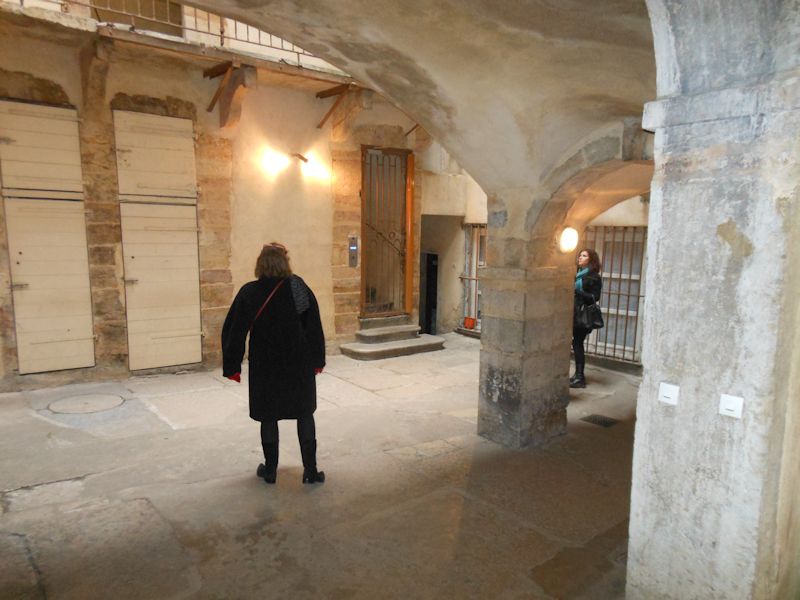
Kristin marveling at the sights in one of the courtyards
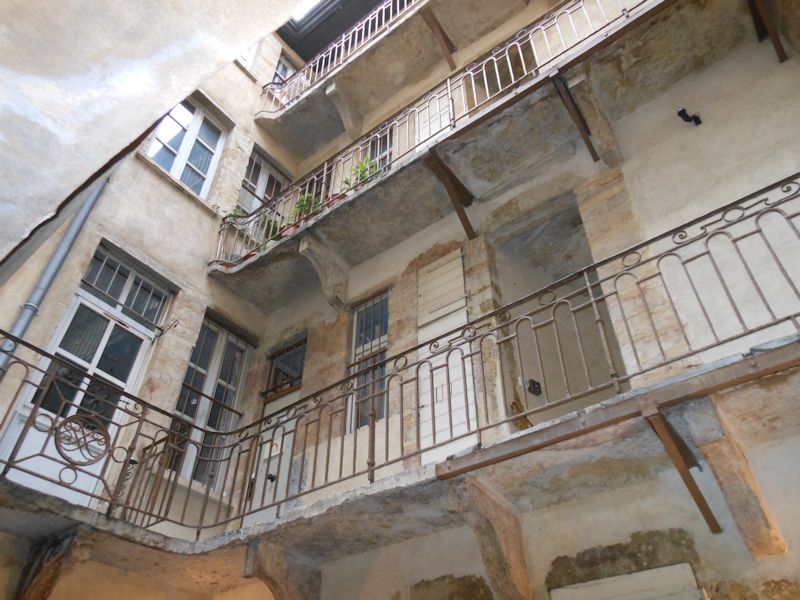
A view up from one of the courtyards

Another view up from one of the courtyards
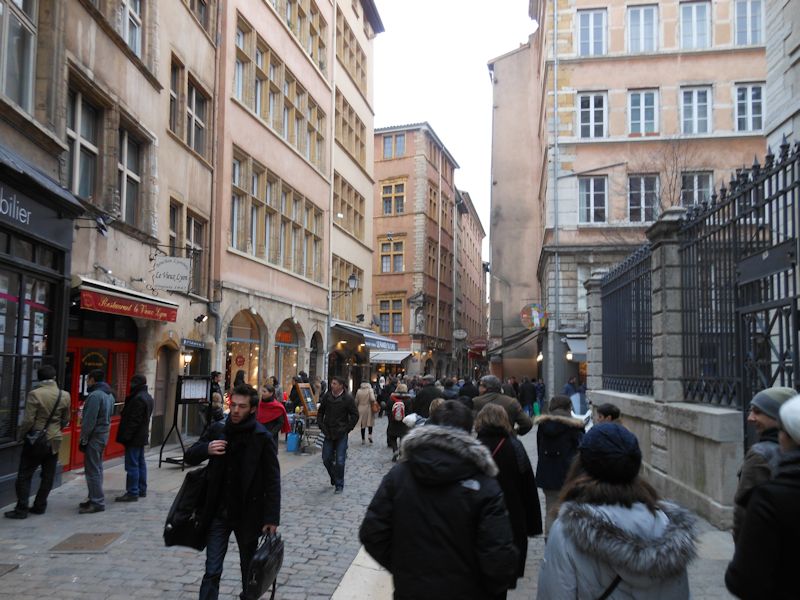
And back out onto the Rue St-Jean
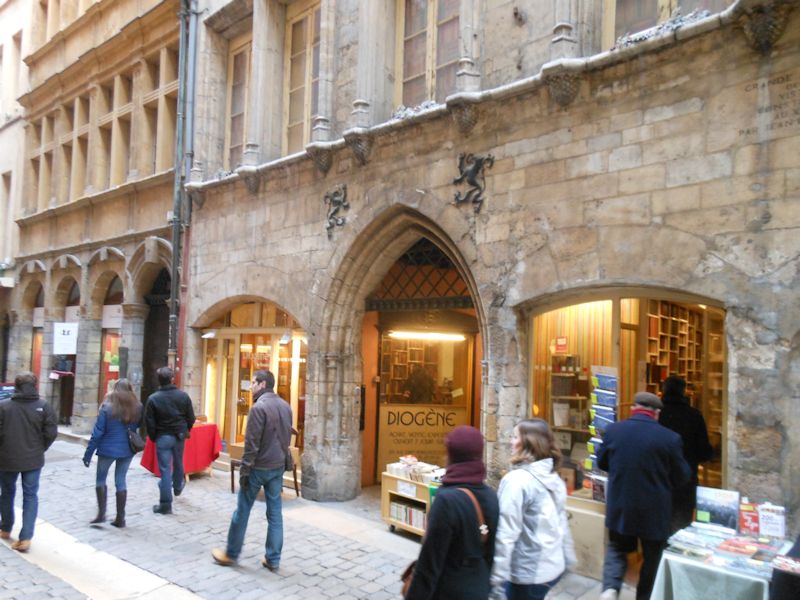
Street scenes
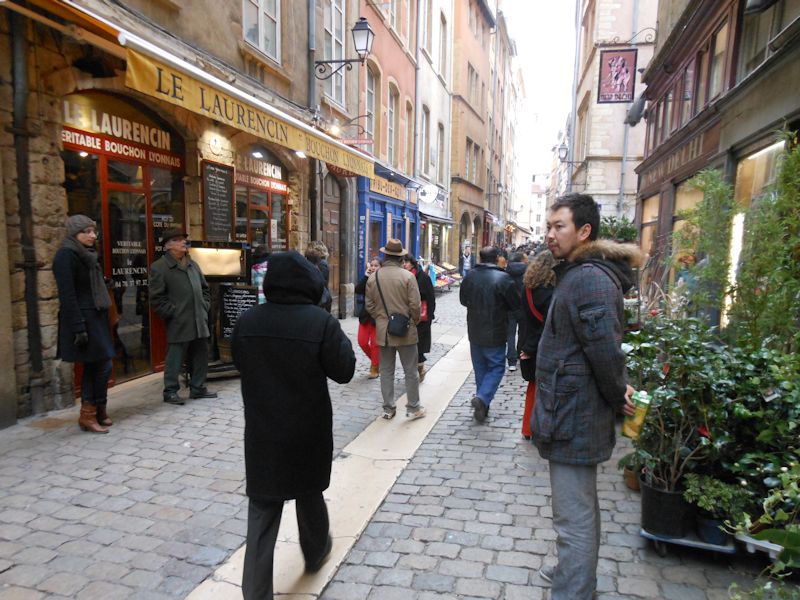
More street scenes in the Old Town. The "veritable bouchon lyonnais" is part of another local tradition -- the ubiquitous "bouchons" (so-called from their 16th century emblem out front, and unrelated to the modern word for "cork" and "traffic jam") are usually small, convivial Lyon restaurants specializing in local, traditional dishes from a kind of workingman's inexpensive milieu. Quite a few of them are certified as authentic, but many other small restaurants use the appellation -- many are now said to be touristified and unreliable, others are said to be fantastic.

Apart from bouchons, America's cultural leadership is everywhere.
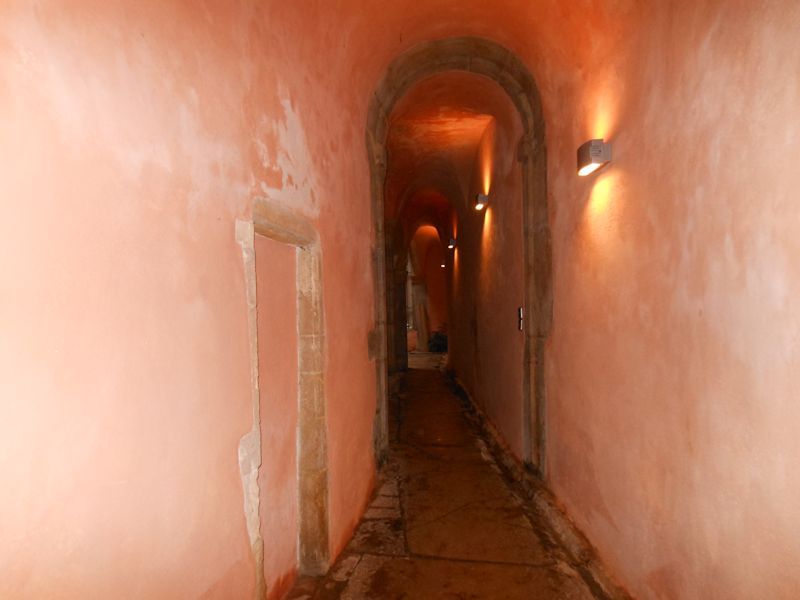
Another traboule! This one is between the Rue St-Jean and the Rue des Trois Maries. The traboules, built from the 4th century onwards, let the silk workers and other home workshops bring their products down to the merchants along the river, and, it's said, let the Resistance move around the city under Gestapo noses after curfew.
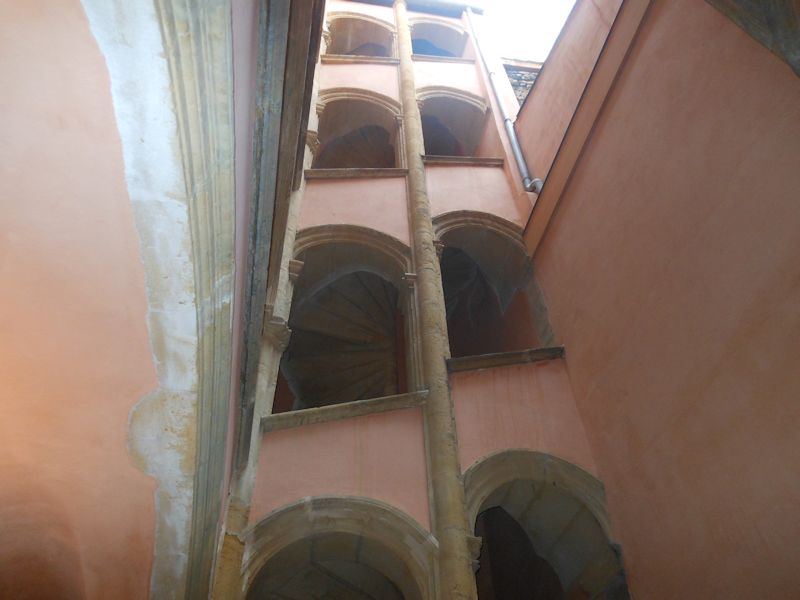
A view from one of the courtyards
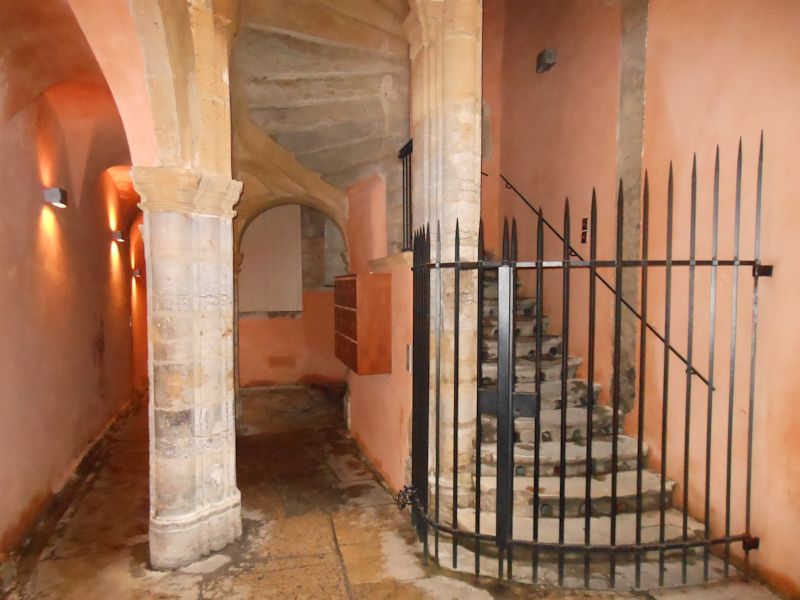
On to the next courtyard.
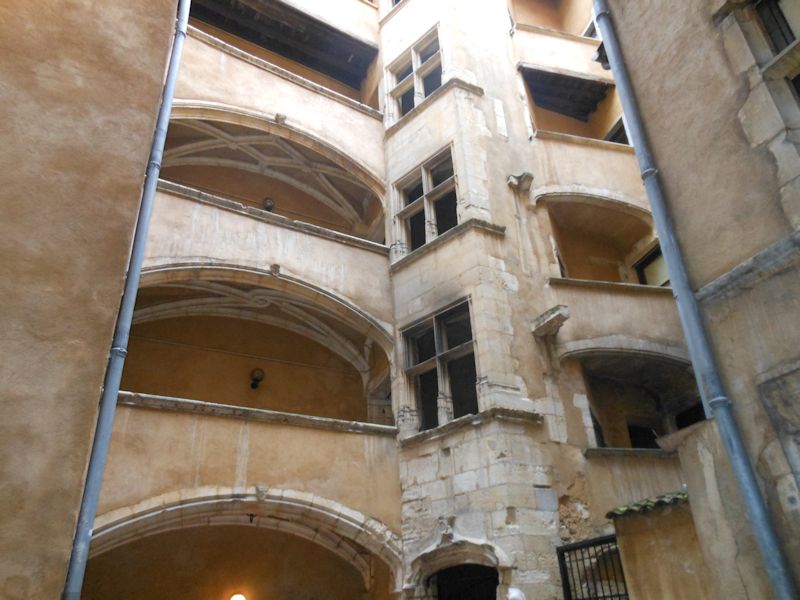
A view from that courtyard, too
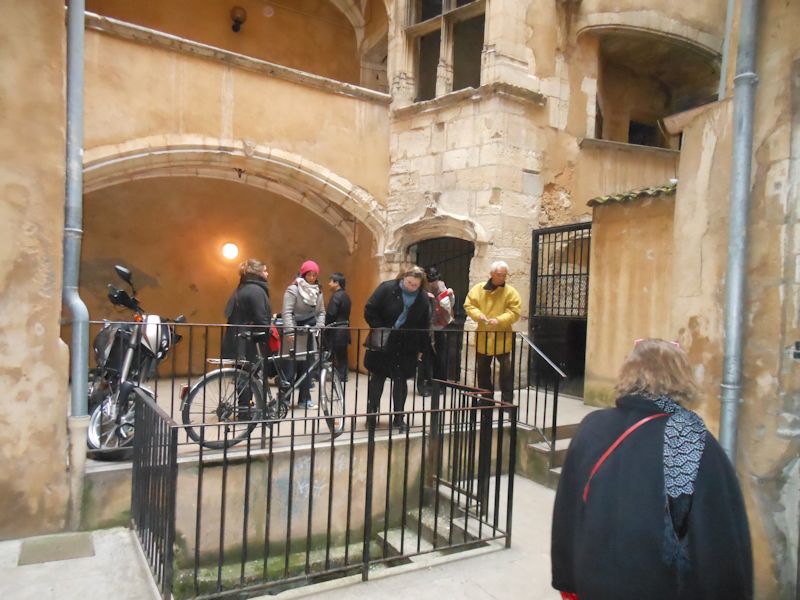
Courtyard with Japanese tourists. This one is unique in that in the 15th century two adjacent courtyards were knocked together to make one.
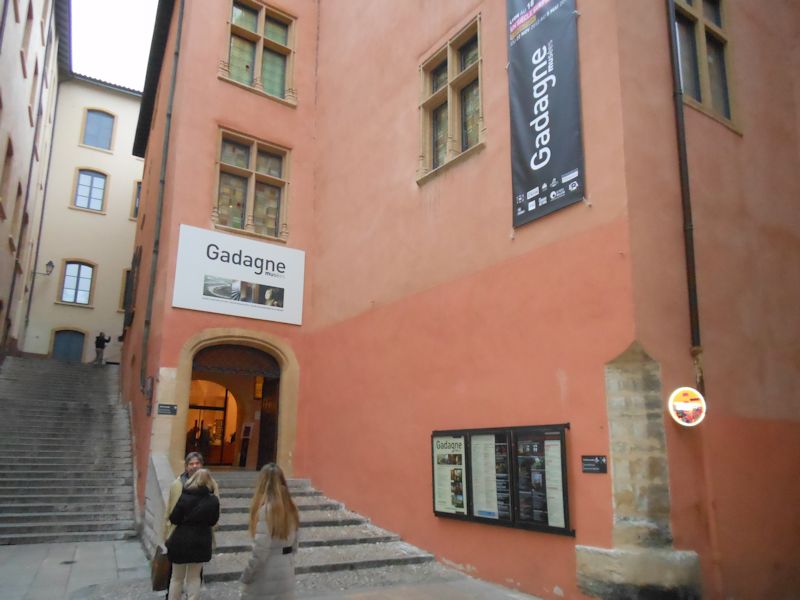
Towards the end of the day, we're visiting the very worthwhile Gadagne Museum of the history of Lyon
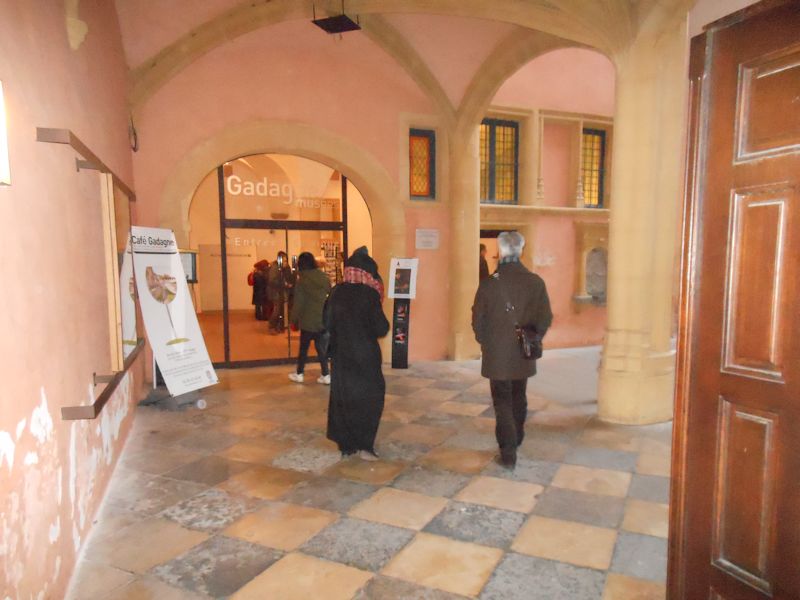
This is a really excellent and well-presented museum ("No Photos!") in an early 16th town house, recently renovated and reopened in 2009.
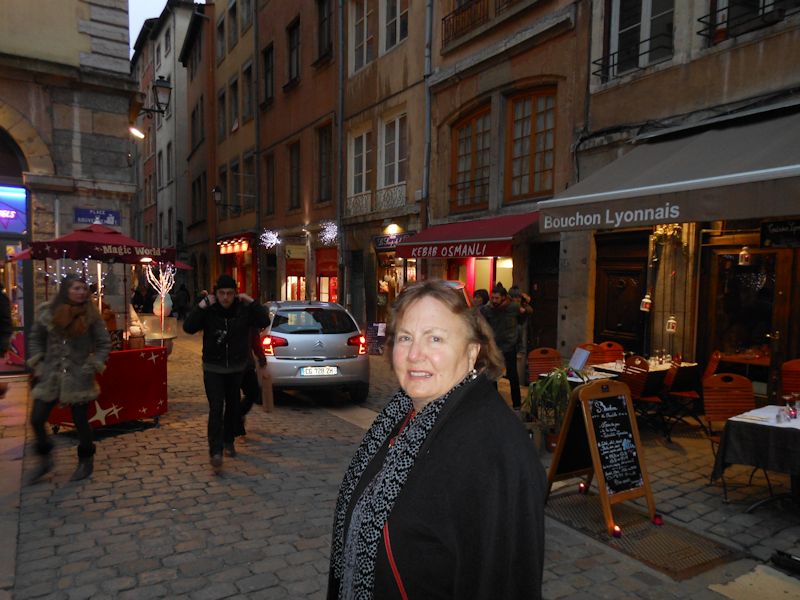
Kristin, another
bouchon lyonnais, and Kebab Osmanli -- neither of them for us right now; tonight we're bound for the famous Brasserie Georges, recommended by Kristin's son George, so there you are.
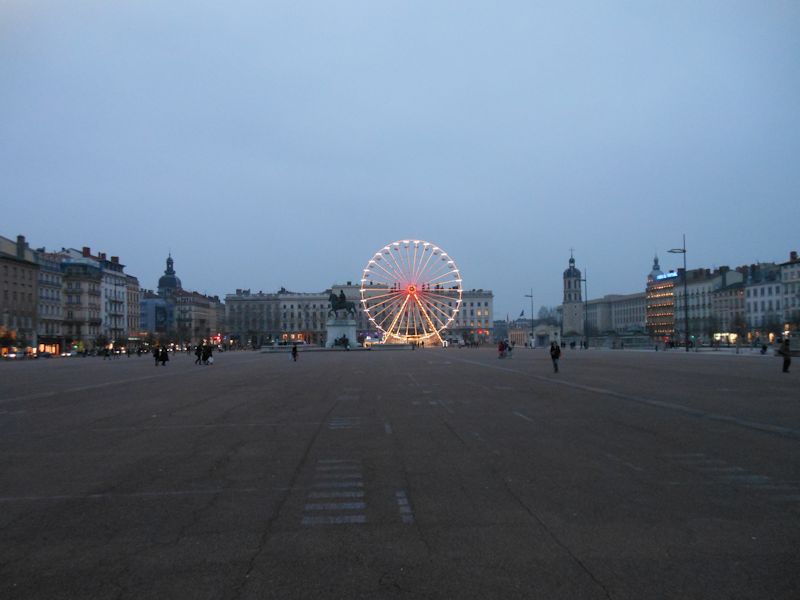
The ferris wheel at dusk
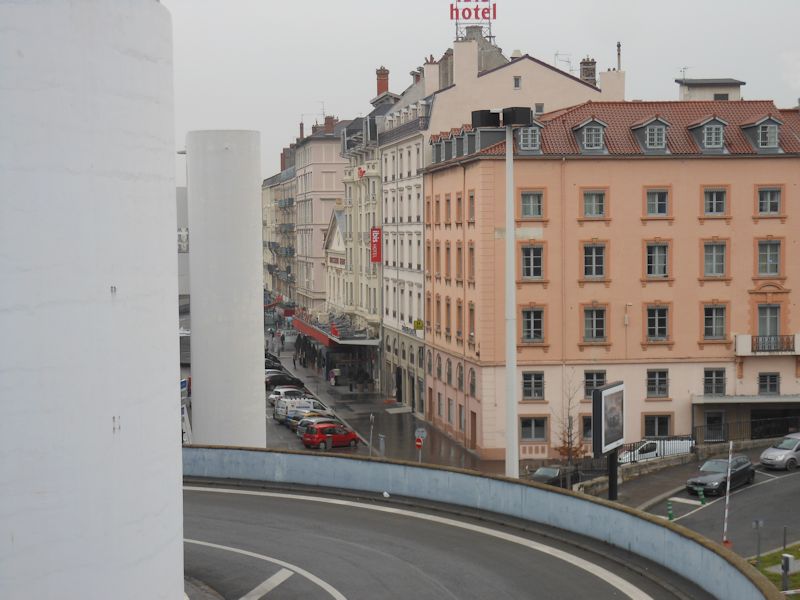
The front door of the Brasserie Georges below, seen the next day from the parking garage at the rail station. One of the largest brasseries in the world, it dates from 1836, before the Perrache station was built alongside it in 1857. It's enormous inside and happily factory-style with some 25 waiters scurrying about at any moment, but the beers are good, the traditional dishes are good as well, and there's an atmosphere of fun -- every few moments, the house jazz-ish band pauses and breaks into "Happy Birthday" as a waiter brings out the signature baked alaska dessert for someone and everybody in the hall sings along. Good fun, once is enough.




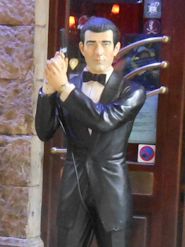 Dwight Peck's personal website
Dwight Peck's personal website 






































































